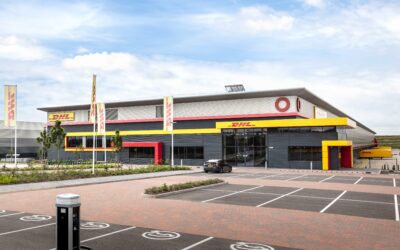From supermarkets to warehouses, barcodes are ubiquitous for identifying and tracking items. The widespread adoption of barcodes is due to almost flawless reliability, with read rates exceeding 99.9% in perfect conditions. However, in parcel sorting, external factors can affect this almost seamless process, resulting in barcode no-reads and, consequently, rejected parcels. To limit such instances, Prime Vision has developed Barcode Vision, a unique solution that reduces the number of rejected parcels.
Sjaak Koomen, Senior Researcher at Prime Vision, a global leader in computer vision integration and robotics for logistics and e-commerce, explains more.

The reasons behind a no-read
In warehouses and fulfilment centres, barcodes allow businesses to identify and sort parcels by destination. Typically, an array of five cameras positioned around a conveyor will scan the barcode, with the parcel then moved to the appropriate area. This is the case for most items, but a small number of barcodes aren’t read the first time.
There are multiple reasons for these no-reads. A barcode may be damaged beyond identification. The surface of the parcel could be non-planar, such as a deformable plastic bag, a cylindrical item or a closed lid with the label placed over the top. The barcode may only be partly visible as the label has been stuck round a corner. Printer errors or low ink levels, as well as camera issues can also render a label unreadable.
Sorting issues for rejected parcels
In all mentioned cases, the parcel can’t be sorted, which means intervention is required. The first option is to rescan the barcode, sending the goods round the warehouse again, reducing sorting capacity. If this fails, the item is rejected. A warehouse operative must rescan it or type the ID number, print a new label, apply it, store the parcel, and re-feed it into the sorting system – an approach very similar to a barcode reading failure at the supermarket. This this costs time and money.
For example, in a real-world scenario, let’s say that rejects make up 5% of the total parcel stream at a large sorting centre processing 40,000 parcels per hour. This equates to a drop in capacity to 38,000 parcels per hour. However, it also means that manual handling is needed to cater for this 5%. In this case, 2,000 rejected parcels are sorted per hour. If handling each of them takes 20 seconds, 11 employees are required to process all the rejects[1]. The drop in capacity and extra investment in personnel adds up to millions in lost revenue every year – so reducing barcode no-reads is definitely worthwhile, especially for large scale sorting operations.
[1] 40000 parcels/hour * 0.05 rejection rate * 20 sec ÷ 3600 seconds/hour = 11.111

Cracking an unread barcode
Barcode Vision offers a proven digital solution for reducing no-reads by providing an additional, special barcode scan for a second chance of identifying an item before it is returned for manual handling. Taking a different approach to a traditional system, Barcode Vision uses multiple methods to reconstruct damaged or unreadable barcodes.
By assessing the barcodes utilised at a site, it can learn the types to expect. Therefore, if one symbol is missing at the start or the end, it can be reconstructed and validated. Furthermore, Barcode Vision can read text below the barcode and combine it with symbols for a successful read.
Beyond using customer information to enable accurate reconstruction, Barcode Vision harnesses deep learning technology. Programmed in-house by Prime Vision, this system can intelligently reconstruct barcodes from blurry images, helping to overcome camera or printing errors.
Implementing a package of countermeasures
The integration of Barcode Vision is straightforward too. It is compatible with existing scanning cameras, which means that the no-read issue can be resolved without replacing or retrofitting any hardware or conveyor components. Barcode Vision interfaces with a smart integration management (SIM) system that collects images and results from existing barcode readers. If the default reader is unsuccessful, this information is sent to Barcode Vision for a second try. As well as using a common Prime Vision interface, the system is delivered as a Windows dynamic link library (.dll) for widespread compatibility.
The effectiveness of the system can be further improved by identifying specific customer problems. Eliminating printer errors, changing packaging to be more reader-friendly and expanding the scanner area also assist the software in minimizing no-reads.

Giving no-read barcodes a second chance
Barcode Vision is no panacea for parcel rejects, but it doesn’t need to be to deliver great results. The success of the technology differs between sorting operations, but even reading 25% of rejected parcels can offer a significant cost saving every year by lowering manual intervention, improving warehouse capacity and making processes more efficient.
With access to a unique, tailored solution that reads between the lines of barcode no-reads, sorting operations now have a second chance to reduce rejected parcels.




